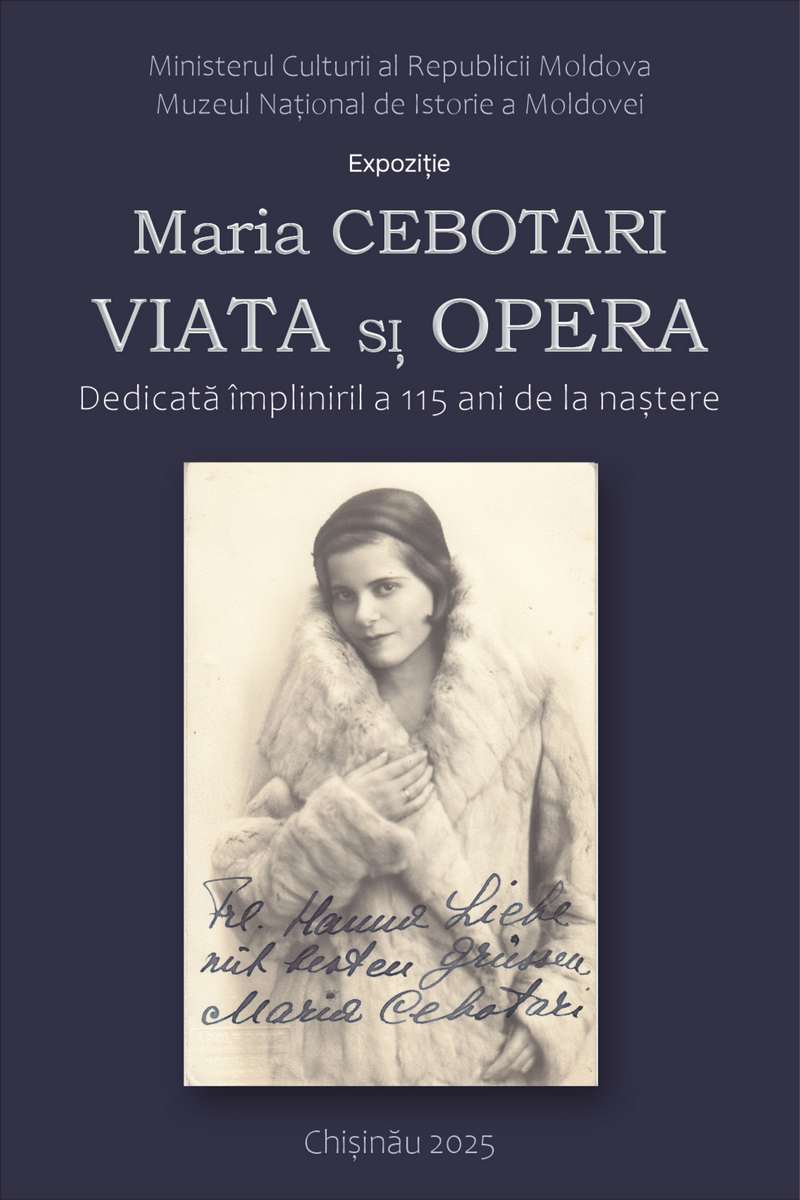 The exhibition Maria Cebotari: Life and Work is a tribute to the renowned singer and actress of international stature, marking the 115th anniversary of her birth. It features approximately 140 photographs, documents, personal belongings, awards, books, artworks, and testimonies that reconstruct the most significant stages of the diva's artistic and personal life. A large portion of these items were collected by her friend Hanna Schliesser and donated to the National Museum of History of Moldova by Maria Cebotari's son, Fritz Curzon-Diessl. The exhibition's cultural value is further enriched by contributions from distinguished personalities such as academician A. Dănilă, artist L. Sainciuc, and S. Pilipețchi, a soloist at the Maria Bieșu National Opera and Ballet Theatre.
The exhibition Maria Cebotari: Life and Work is a tribute to the renowned singer and actress of international stature, marking the 115th anniversary of her birth. It features approximately 140 photographs, documents, personal belongings, awards, books, artworks, and testimonies that reconstruct the most significant stages of the diva's artistic and personal life. A large portion of these items were collected by her friend Hanna Schliesser and donated to the National Museum of History of Moldova by Maria Cebotari's son, Fritz Curzon-Diessl. The exhibition's cultural value is further enriched by contributions from distinguished personalities such as academician A. Dănilă, artist L. Sainciuc, and S. Pilipețchi, a soloist at the Maria Bieșu National Opera and Ballet Theatre.
Born on February 10, 1910, in Chișinău, Maria Cebotari displayed vocal talent from an early age, singing in the choir of the Nativity Cathedral under the guidance of Father Mihail Berezivschi. Between 1924 and 1928, she studied at the Unirea Conservatory in Chișinău, training in vocal performance with M. Zlatova, A. Dicescu, and G. Afanasiu-Gabrielli. In 1928, together with her future husband, actor A. Vârubov, she moved to Europe, where she embarked on her career. Accepted into the Dresden Opera ensemble, she made her debut on April 15, 1931, in Puccini's La Bohème, and from 1934, she began performing at the Berlin State Opera. That same year, at just 24 years old, she was awarded the title of Kammersängerin, becoming the youngest recipient in vocal history, astonishing audiences with the breadth of her repertoire in terms of time periods, styles, and genres.
Maria Cebotari also distinguished herself in cinema, appearing in ten films-most of them musicals-where she played leading roles or performed as a singer. On set, she collaborated with prominent figures such as director C. Gallone, actors G. Diessl and F. Giachetti, tenor B. Gigli, and others.
In 1937, during the filming of Strong Hearts, Maria Cebotari starred alongside Austrian actor and former painter Gustav Diessl, who became her second husband. Their marriage resulted in two sons: Peter (born 1941) and Fritz (born 1946). Maria Cebotari's performances graced the stages of Dresden, Berlin, Vienna, and Salzburg, as well as opera houses in Prague, Riga, Amsterdam, Brussels, Paris, Venice, Rome, Stockholm, and Basel. The final stage of her career was at the Vienna Opera.
On June 9, 1949, Maria Cebotari passed away prematurely and was laid to rest in the Diessl family crypt at Döbling Cemetery in Vienna.
Her extraordinary talent, unwavering determination, and thirst for life gave rise to the cultural phenomenon of Maria Cebotari, which remains a vital part of both national and European cultural heritage.











 31 August 1989 St., 121 A, MD 2012, Chisinau, Republic of Moldova
31 August 1989 St., 121 A, MD 2012, Chisinau, Republic of Moldova

















































